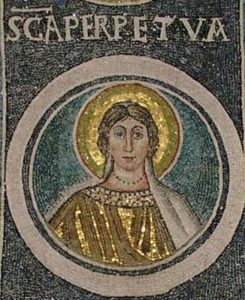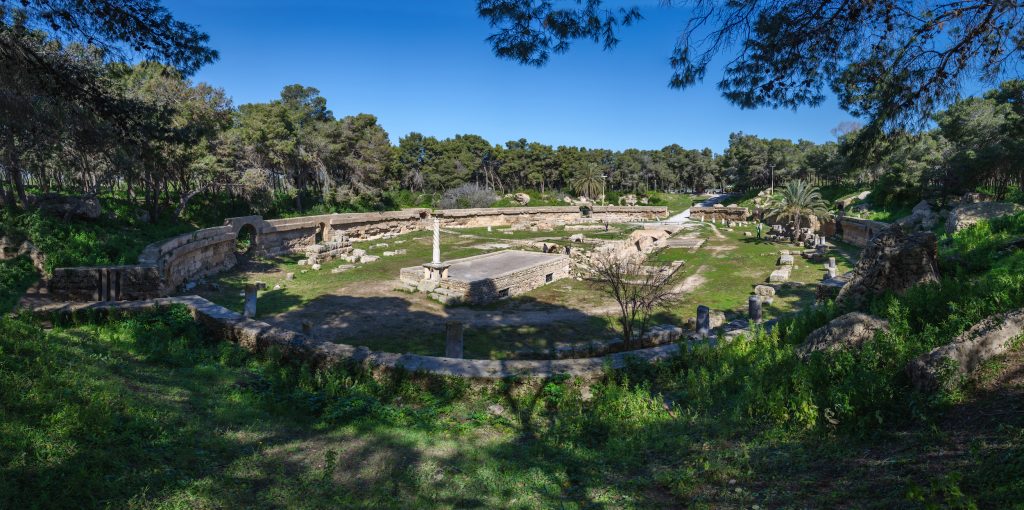And Felicitas. The red rose is the symbol for Christians who have paid the ultimate sacrifice for their Lord. As Peter who was crucified upside down with his wife did. As Paul who was beheaded under Nero did. As Dietrich Bonhoeffer who was hung under Hitler did. As the blessed martyrs Perpetua and Felicity under Septimus Severus did.
I have to say that except perhaps for Polycarp, Perpetua is my favorite martyr. The date of her martyrdom is generally observed on March 7th in Catholic and Protestant churches that share the same ecclesiastical calendar.
Who is Perpetua?

Perpetua was a twenty-two year old married noble woman who lived in Carthage, a city in the Roman province of Africa. She had just given birth before her arrest. Her sister-in-Christ, Felicitas, was a pregnant slave girl who was jailed (and killed) with her.
The Martyrdom of Perpetua is actually a diary written in the first person by Perpetua during her imprisonment. The closing words were added by someone who witnessed her death. During her time of confinement, her father brings Perpetua her infant to nurse, and repeatedly begs her to renounce her faith in Christ. She says that just as a vase (for example) is a vase and not something else, so is it that she is a Christian and not someone else.
“While we were still under arrest my father out of love for me was trying to persuade me and shake my resolution. ‘Father,’ said I, ‘do you see this vase here, for example, or waterpot or whatever?’
‘Yes, I do’, said he.
And I told him: ‘Could it be called by any other name than what it is?’
And he said: ‘No.’
‘Well, so too I cannot be called anything other than what I am, a Christian.’
– Perpetua
Perpetua’s visions
During the closing days leading to her death in the local arena, Perpetua has several visions that suggest to her how she will be killed. She also sees in a vision her younger brother who died of cancer as a child. He is trying to drink from a well, but cannot quite manage to reach the rim. The gaping, facial wound caused by the cancer remains as hideous in death as in life. She prays for him, and in a subsequent vision, he reappears and is refreshed and his malignant face wound is healed. See my thoughts on prayers for the dead here.
Perpetua and Felicitas leave this life
Most of Perpetua’s fellow Christians in her company are killed by wild beasts, but Perpetua dies at the hands of a gladiator, who is apparently inexperienced and nervous, so she must guide his waivering sword to her neck. For those readers who might be interested in learning more about the blessed martyrs Perpetua and Felicity, a highlights of her diary and the postscript of her death comes from this PBS site.
A brief video of her passion (martyrdom) can be found here. See also the martyrdom of Dietrich Bonhoeffer.

Header photo: John Shepherd (iStock.)




